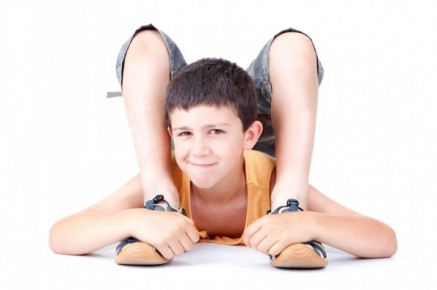Your Child's Hospital Journey

Symptomatic Hypermobility
What is Hypermobility?
Hypermobility is a description of joint movement. Hyper means ‘more’ and mobility means ‘movement’. Ligaments offer stability to joints and in hypermobility, ligaments are lax and joints have more flexibility. It is not an illness or a disease, just the way someone is put together. It is considered a normal finding by medical professionals.
It is very common, 1 in 10 adults are hypermobile in some of their joints and it is more common in children. There may be a family history. Being hypermobile can be an advantage in some sports. It is normal for very young children to have far greater range of joint movement than adults and this becomes less common as children get older.
Common parental concerns:
Children may initially take longer to achieve crawling, walking and running and may be more likely to bottom shuffle.
Other frequent findings are:
- Clumsiness and frequent falls
- Flat feet
- Clicky joints
- Tiredness
- Reluctance to walk longer distances
- Pain
- Difficulty with handwriting, hold a knife and fork and dressing.
Is there cause for concern?
Many children who are hypermobile experience no symptoms or difficulties and being hypermobile is beneficial in a lot of sports. It is not fully understood why some children have more symptoms than others and it is not necessarily related to the degree of hypermobility (Leone et al, 2009). However it is believed that these problems are related to poor muscle strength, poor muscle stamina and poor control of joint movement, not the hypermobility itself.
What can I do to help?
As the symptoms are understood to be related to weaker muscles and that the joints may be less stable, muscles need to work harder and therefore it is particularly important to focus on being healthy, strong and fit. The stronger and fitter your child is, the better for their hypermobility and general well being. Ensure your child does not get overweight as this may stress muscles and joints more.
Encourage normal everyday activities and play, for example:
- Swimming
- Cycling
- Play parks/soft play
- PE
- Dance
Pacing
If muscle pain after exercise is a problem, your child should not stop being active but pacing activities may help. Pacing means to gradually increase an activity in order to achieve a goal. Don’t do too much activity on one day but spread it throughout the week and focus on building more strength and fitness.
Practice
Your child needs to build their muscle strength, which takes time and most importantly, practice.
Pain management
Aches and pains associated with hypermobility are usually a result of muscle fatigue, not damage or injury. A warm bath or a hot water bottle may help. Pain killers are not usually effective. Try not to focus on pain and distract your child from dwelling on it.
When to seek advice
Physiotherapy can be useful after an injury to give advice and exercises in order to return to normal activities. Physiotherapy exercises can improve core strength and stabilise joints. If your child is having problems with activities of daily living such as handwriting, referral to an Occupational Therapist may be helpful. Seek advice from your GP if you are concerned that your child is experiencing frequent or severe pain.
